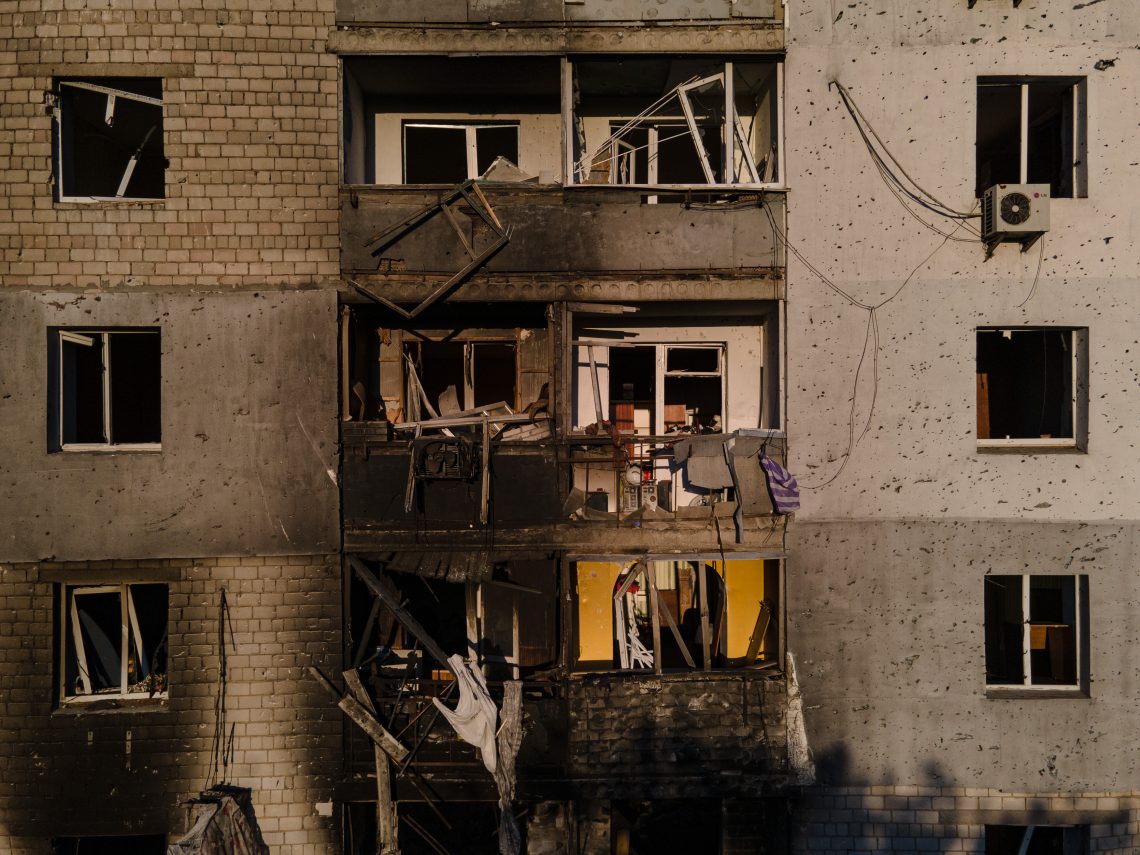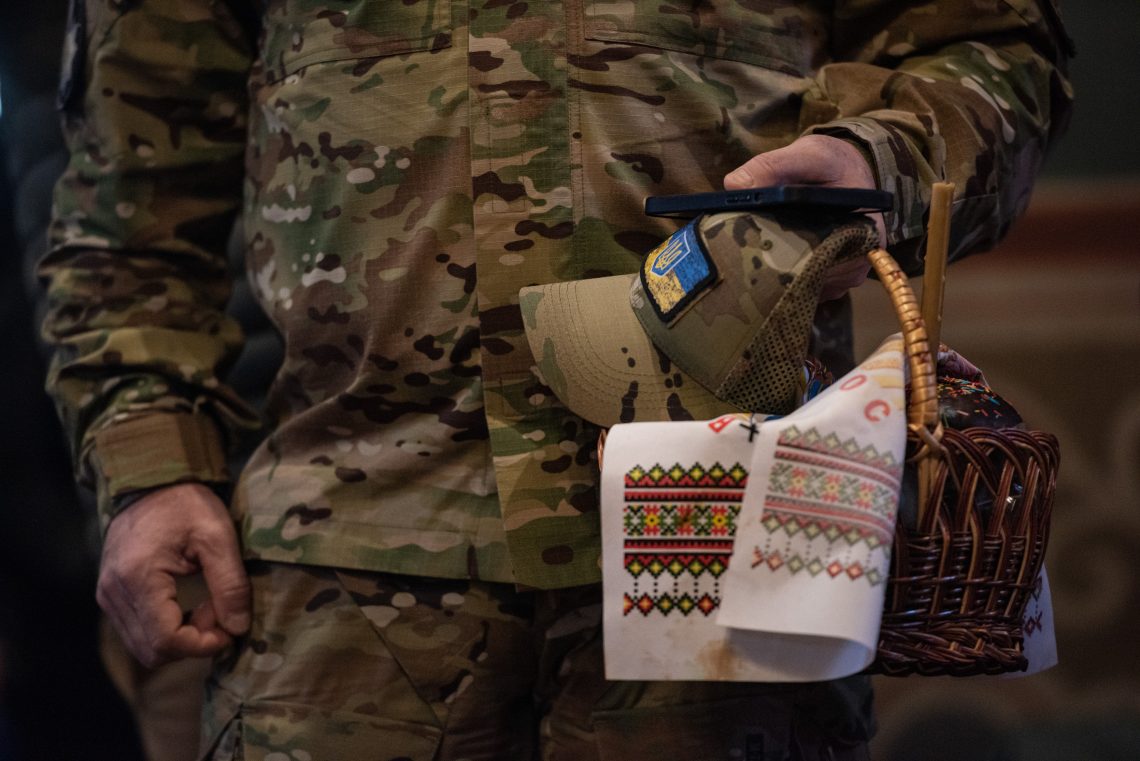Will Ukraine shift to an irregular war?
The fighting in Ukraine could morph into asymmetric warfare, which would put the Russian forces at a disadvantage.

In a nutshell
- Russia has made crucial strategic mistakes while invading Ukraine
- Moscow underestimates the importance of irregular conflicts
- Russian forces are not prepared for asymmetric warfare
What we have been observing in Ukraine since February 24 can be described as a classic high-intensity conflict, in which no weapons of mass destruction have been used – so far.
Most likely, Russian President Vladimir Putin’s initial hope was to obtain an almost immediate surrender of Ukrainian President Volodymyr Zelenskiy and to put a pro-Russian puppet in charge of the cabinet. This would have allowed controlling the new government in Kyiv from Moscow, while leaving appearances almost unchanged. It is not certain, under such conditions, that an independence referendum would have been held in the Donbas area like the illegal one that was held in Crimea. In that case, perhaps there would have been no need.
The Ukrainians, although inferior in numbers and armament, have clearly learned the Western lessons provided by NATO trainers over the years.
However, this scenario failed to materialize. Russians found themselves mired in a heavy war, in difficult weather conditions and terrain, facing a population that was overwhelmingly hostile and determined not to give up a single inch of land. The elderly, women and children fled in great numbers, leaving the men to fight. Most of Ukraine’s 44 million citizens are on the move. At least 5.4 million have left for other countries, and large numbers have moved to safer areas inside the country. Others headed for the front line.
Miscalculations
Until now, the Russians have been facing the Ukrainian Army and the National Guard, which many civilians have joined. After the mediocre performance of the Russian Armed Forces in Georgia in 2008, President Putin decided to implement extensive reforms. This was a continuation of a trend that began in 2006, with cuts in the number of conscripts and higher ranks in favor of a higher percentage of professional soldiers. But the reality on the ground now shows there is a clear gap between ambitions and results. The Kremlin’s defense spending in 2019 stood at around $61 billion, not much compared to France’s $54.8 billion or the United Kingdom’s $52.3 billion but if purchasing power parity is applied to these numbers, it raises the figure to around $150-180 billion.
Russia tested its capabilities in Ukraine in 2014 and in Syria in 2015, but in both cases, the clashes took place according to different dynamics. In Syria, Russian forces moved freely, supported by the local dictator, waging war on rebels in theory but against the whole population in practice. Entire urban areas have been razed to the ground. Nothing has been spared, not even the hospitals, which have become frequent targets in clear breach of every international law. Similar tactics are applied today in Ukraine. Every urban center of interest is devastated to inflict both a physical and psychological blow to civilians.

And this, in addition to initial miscalculations by the Kremlin, has been the big mistake of the Russian Armed Forces: to hit the population without mercy, harassing it in every possible way, raping it, robbing it and killing it in the most horrific ways and leaving corpses on the streets, as the events in Bucha have shown.
This modus operandi raised not only heated protests from international public opinion, but above all created widespread resentment among the Ukrainian population. President Zelenskiy himself, initially inclined to talks and negotiations, in recent weeks has said he no longer has any hope of reaching an agreement with President Putin. His intention is to fight to the last man to free his country and maintain the territorial borders of February 2022 at the very least.
The Ukrainians, although inferior in numbers and armament, have clearly learned the Western lessons provided by NATO trainers over the years, especially in Afghanistan, where they participated systematically in operations against the Taliban. This experience, which the Russians did not have, has left its mark. Moreover, thanks in part to foreign aid, they have managed to create a stalemate that could prove dramatic for Russia.
The initial Russian attempt to break through Ukrainian lines to push deep into the central-eastern sector of the country has failed. Neither could the Kremlin prevent the West’s weapons shipments, which will play a key role in the coming weeks. The Russians are not even able to locate them, let alone destroy them. At the moment, therefore, the situation does not appear to favor the occupiers.
More on the Ukraine crisis:
- Prince Michael of Liechtenstein: Ukraine in focus
- Henrique Schneider: A geopolitical map of Asia after the Ukraine conflict
Still, the fact remains that the Russian armed forces are more numerous than the Ukrainian ones and have a much larger arsenal. It is therefore conceivable, if the conflict was to become a war of attrition, that the Ukrainian forces would give in and that a compromise would be reached.
But after what has happened to the population, peace is difficult to imagine. Russians becoming more entrenched could lead to more resistance. Ukrainian units have already started ambushes and a sort of “active defense” with numerous counterattacks on enemy forces, causing heavy losses. Sources do not agree but, at the time of writing, according to some estimates, there are 15,000-20,000 dead on the Russian side.
Metamorphosis
Moreover, attacks on energy infrastructure are taking place inside Russia, and little is known about what is going on in Belarus. There has been at least one Ukrainian helicopter gunship raid that destroyed a major petroleum storage site inside Russia. At least three more major sites have been burnt down. Whether those were from drone attacks or direct sabotage remains to be determined. And while some sites have certainly been attacked, in other cases the explosions could be due to the terrible state of maintenance of Russian critical infrastructure. As the war drags on, there could be more and more attacks inside Russia on energy hubs and transportation infrastructure, key bridges and intersections, especially rail and airports, to impede or prevent Russian forces from moving and resupplying. There could even be targeted assassinations of Russian military leaders who were associated with the appalling war crimes inflicted on the Ukrainian people.
In answer to this and other operative difficulties, the Russians have already begun to call home mercenary units scattered throughout the world, especially on the African continent. The notorious Wagner Group seems to be increasingly used to compensate for losses and there are persistent rumors that the company is organizing 10 units the size of a battalion.
In war, numbers matter – and men matter more than weapons. It is estimated that in an insurgency situation, the aggressor needs 10 soldiers for every insurgent. Simple math shows that a counterinsurgency in Ukraine is unthinkable for the occupiers to sustain. And not only because the 44 million Ukrainian citizens are spread over a vast territory. The Russian Army lacks the means to counter a long rebellion, as well as the motivation and, above all, the training.
Should the conflict become irregular, the insufficiently prepared Russian contingent will face a crushing defeat.
Meanwhile, Ukrainian soldiers have trained for 20 years of counterinsurgency in Afghanistan side by side with NATO troops. And even the Russian forces who conduct professional irregular operations, such as the Wagner Group, are not necessarily capable of managing what could happen inside Ukrainian borders in the coming months, judging from past results.
In Africa, the Wagner Group placed itself at the service of weak and corrupt regimes with the aim of keeping the population under control and preserving strategic locations. Yet when it was no longer faced with civilians but with well-trained troops, things changed, as demonstrated by the events of February 7, 2018, in the Syrian area of Deir ez-Zor near the Iraqi border. About 500 Wagner units, in support of Syrian government forces, clashed with about 40 Delta Forces, Green Berets and Marines. The battle was a debacle for the Russians and the Syrian government forces, and cost hundreds of lives.
Sources have reported the presence of Russian mercenaries in Ukraine, even in Bucha, and according to some 3,000 of them have died already. The use of these units has several advantages: in Russia, having been declared illegal, they pretend not to have any contact with the government; they are probably better trained to fight in urban areas than, for example, regular troops formed by simple conscripts; and their losses fall below the radar of the media and public opinion.
Scenarios
These forces cannot replace those of an army trained for irregular operations, especially in a large and densely populated territory like Ukraine. The importance of unconventional conflicts continues to be underestimated by the Russian military leadership, which has learned little from the operations in Afghanistan, Chechnya and Syria.
Those experiences were not adequately institutionalized through a doctrine capable of addressing the tactical differences between a conventional and irregular war, or handling conventional and unconventional war simultaneously, as will almost certainly be the case. It is therefore extremely plausible that, should the conflict become irregular, the insufficiently prepared Russian contingent will face a crushing defeat.








